Last month (May 2020) I saw an Atala Blue butterfly laying eggs on a coontie plant in my backyard. When we first moved here about ten years ago, I would occasionally see a few lone Atalas wandering through (see this post), then after planting some coontie, I began to see them a bit more regularly (see here and here), and then I started to see broods of caterpillars come through my backyard. But I was never able to put together a complete life cycle, from egg to caterpillar to pupa to butterfly.
I’d been looking forward to seeing what would happen, and for once, I was able to carry out my plans, thanks to circumstances most of us are all too familiar with (enforced home stay thanks to the novel coronavirus). This summer, because I haven’t been as distracted by having to go anywhere (work, kids, and all other kinds of, you know, life, are taking place at home now), I’ve been able to check on them more regularly than previously.
And over the past month or so, I managed to find (and photograph!) the complete cycle. Here are the results: a brief photo essay on the life cycle of the Atala Blue butterfly in a suburban back yard in Boca Raton, Florida.
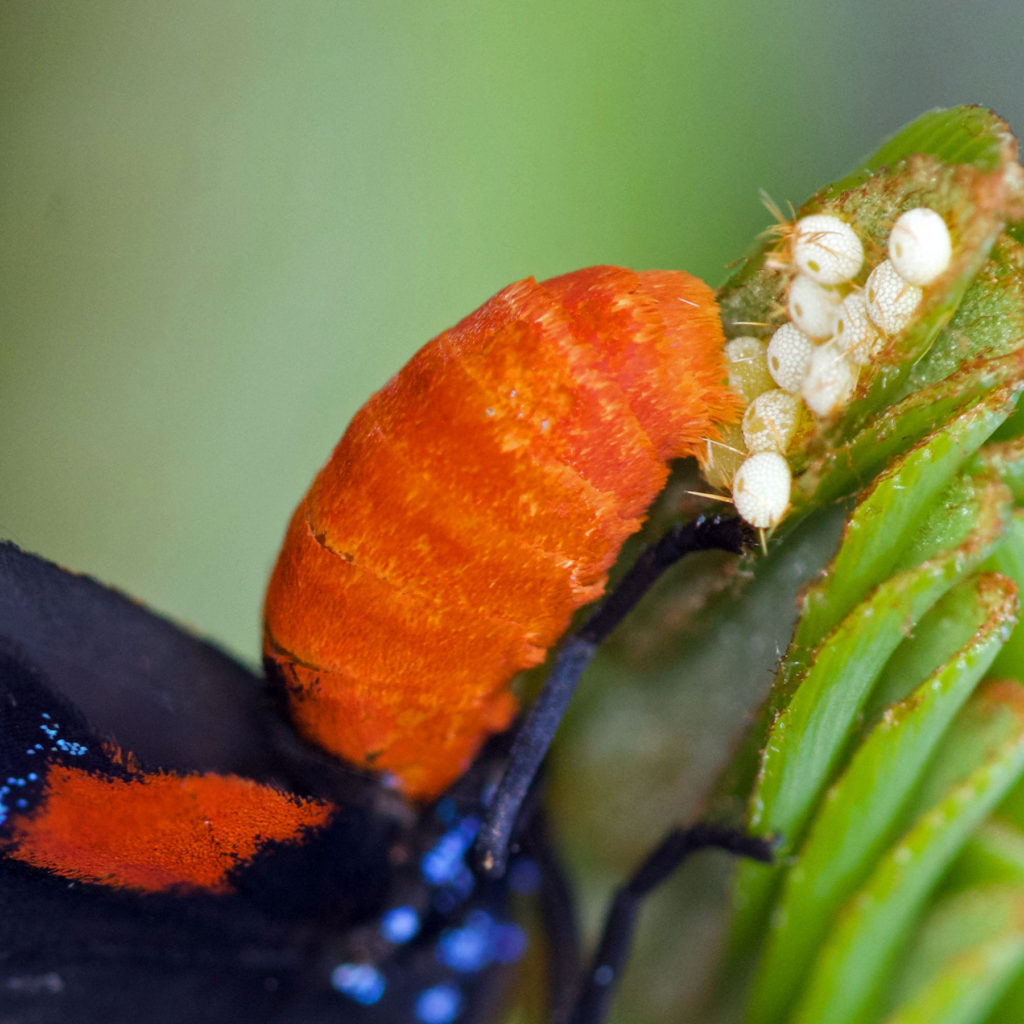
The eggs were laid in May, but I didn’t get any good pictures of the hatch out from early June. So here is a very early instar caterpillar from the current iteration (which must have occurred while my back was turned, since I didn’t find any of the eggs from which this latest batch of cats came):
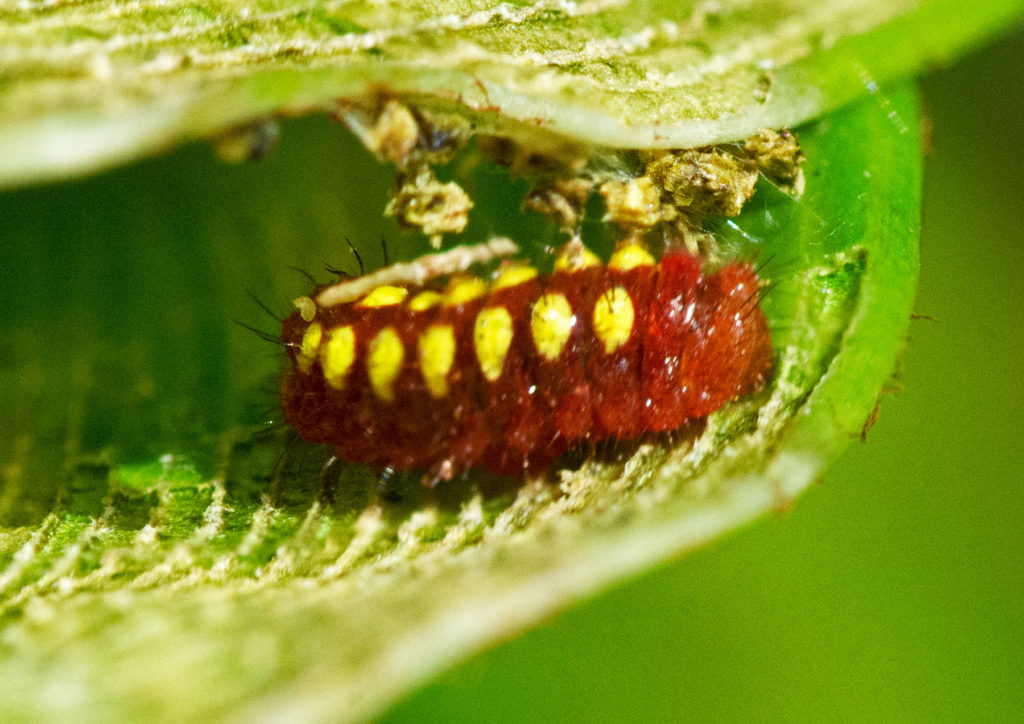
The caterpillars of this species are gregarious feeders, because they don’t need to disperse for survival–the toxins in their skin are devastating to would-be predators. So they can afford to congregate in large numbers, knowing that any predator that attempts to eat one won’t make a second try. The cats here are probably three or four days old; they’re all much bigger than the one above:
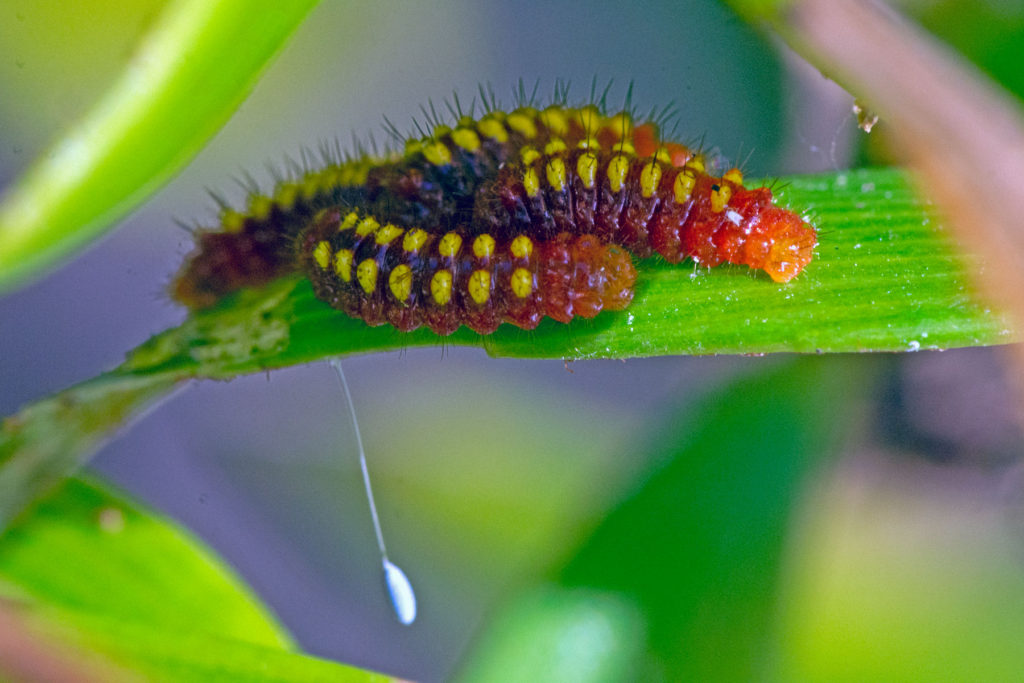
These cats eat only the leaves of the coontie and closely related cycads, and only the coontie is native to south Florida, so it’s fairly critical to the survival of this species that these plants continue to thrive. The recent interest in gardening with native species has been a real boon to the Atala. (The thirty-plus ornamental exotic cycads that have been tested here are not as abundant in cycasin nor as attractive to larvae given a choice. The native cats prefer the native plants.)
The pupal cases are actually kind of interesting, if you’re into that kind of thing. They start off with the markings of the late instar caterpillar visible through the casing:
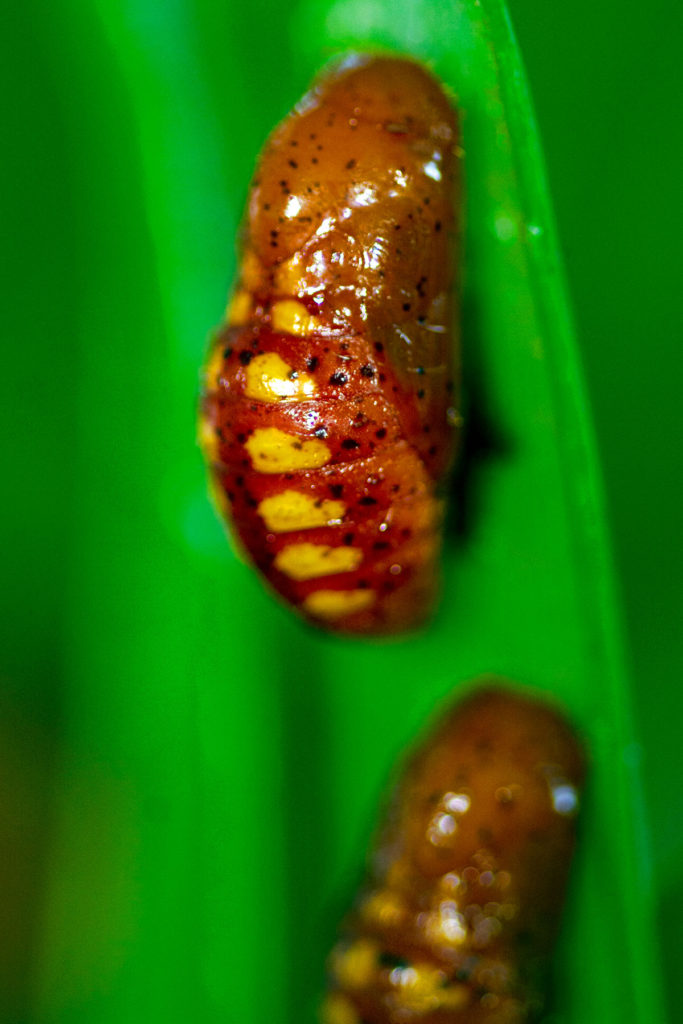
After a few days, they start to look a bit more like a “hard case”:

As the transformation inside draws nearer to completion, the pupa takes on a sort of two-tone appearance, thanks to the black wings, not yet pumped up, being visible through the shell:
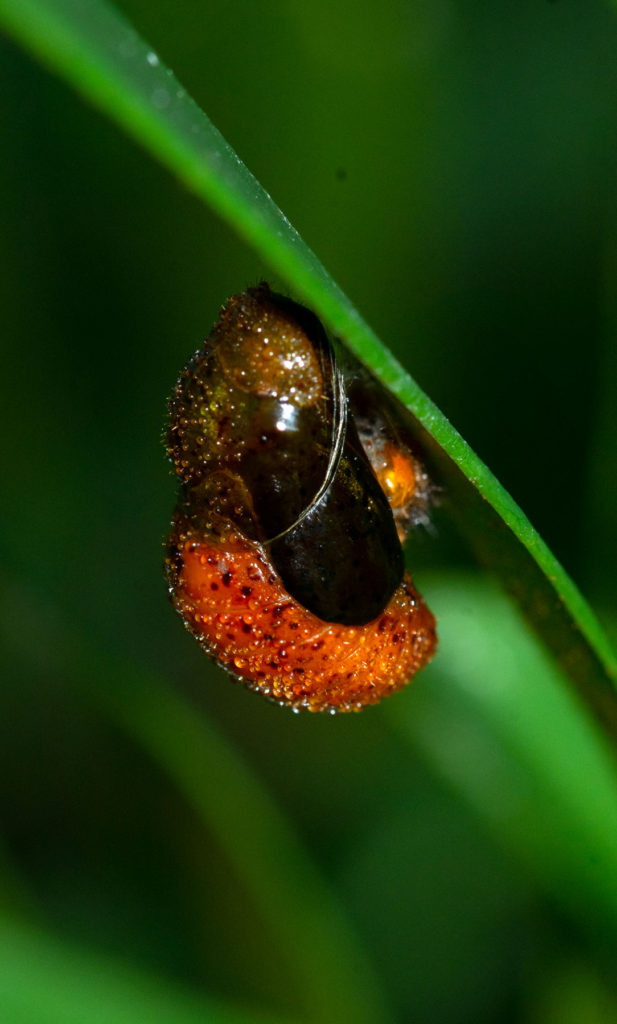
And then it’s time for the butterfly to emerge from the pupal shell that the caterpillar had made:
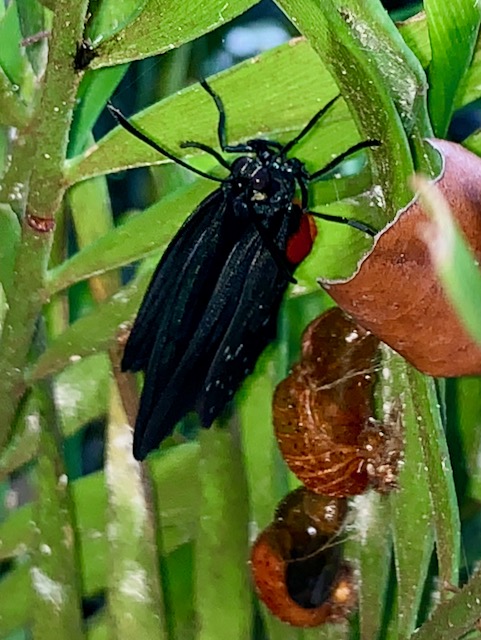
The butterfly above, seen here early in the morning, has just hatched (“eclosed”) from its pupal case, which you can see just below it, and is resting after having pumped up its wings. When they first come out of their shell, so to speak, they look a little furfled, as their wings haven’t yet expanded:
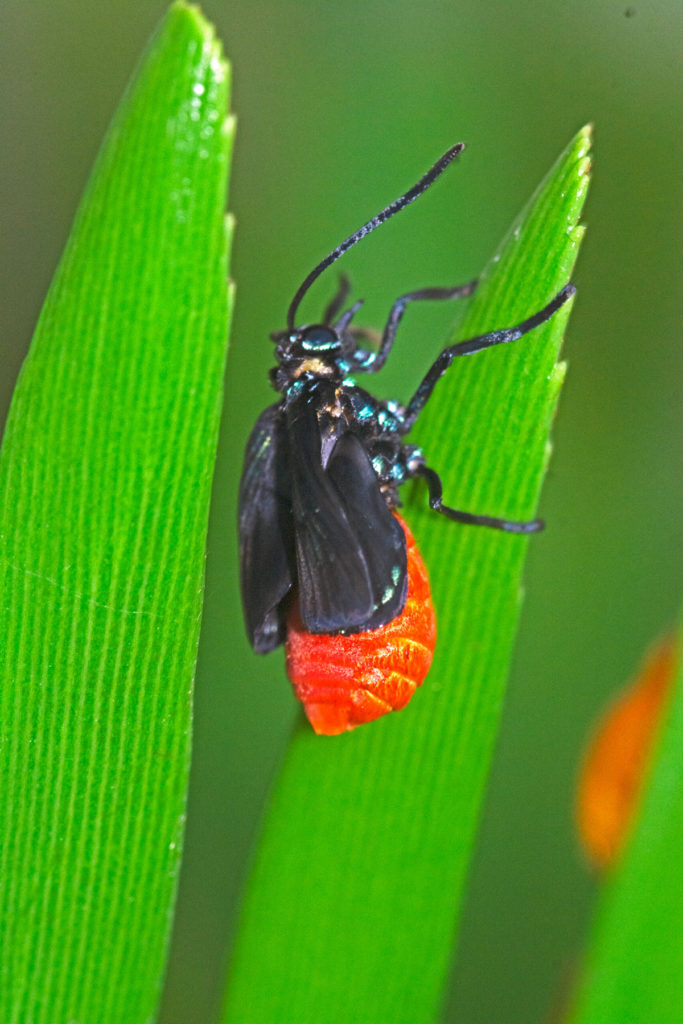
Here’s a top view:
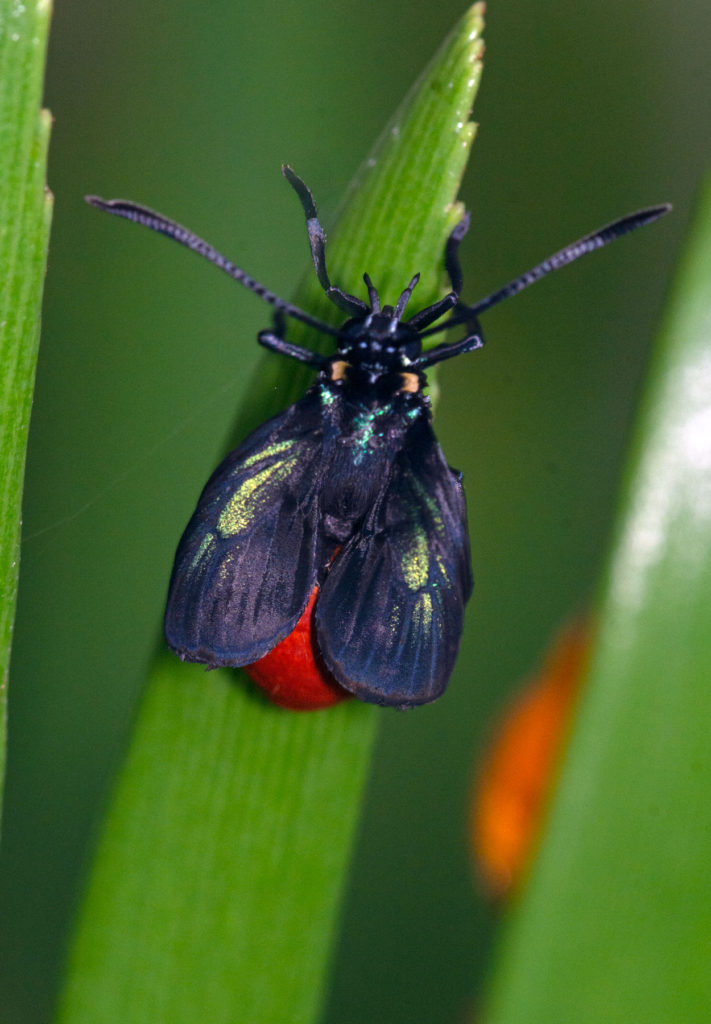
Over the course of just a few minutes, though, the wings get pumped up with hemolymph and start to look a lot more normal. The one below still has a ways to go:
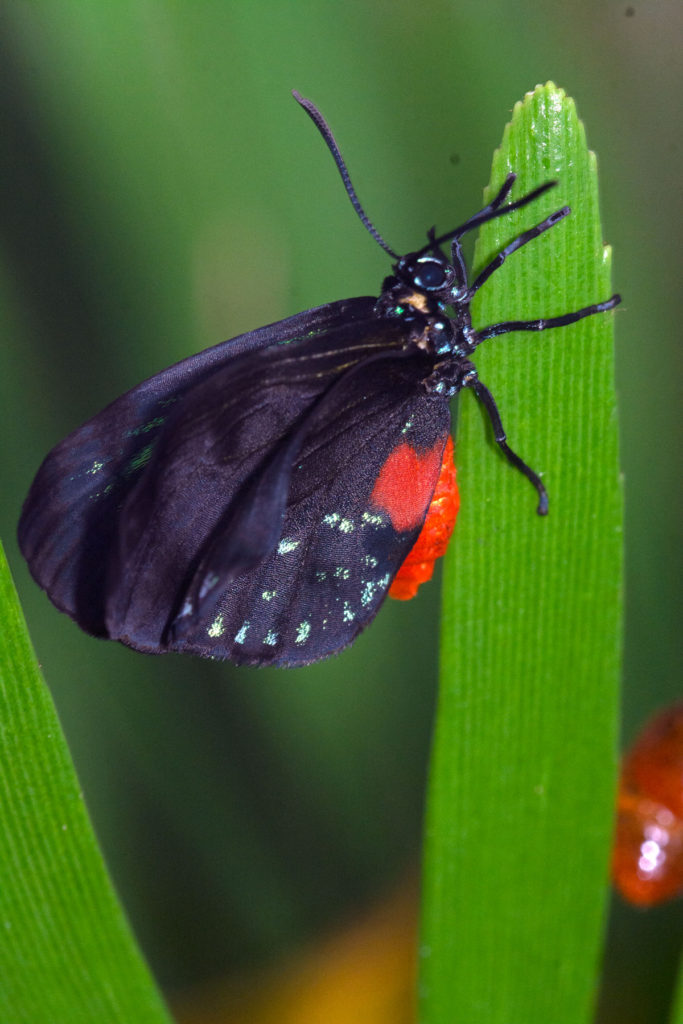
And once they’re done filling up, it’s time for the wings to dry off, and then the butterflies can fly off:
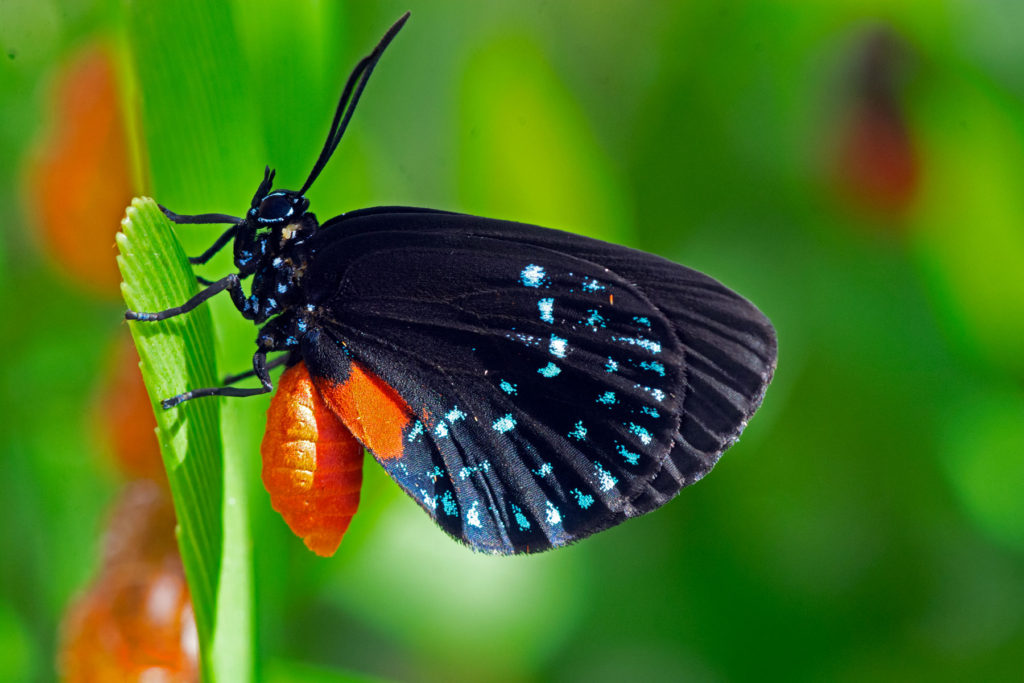

This is the best picture story I could imagine! Thanks very much! I have two enclosures at the moment with coonties having caterpillars in one and chrysalises in the second.
Last year I let Mother Nature care for these babies and they all were eaten or stung and died. Jupiter Farms